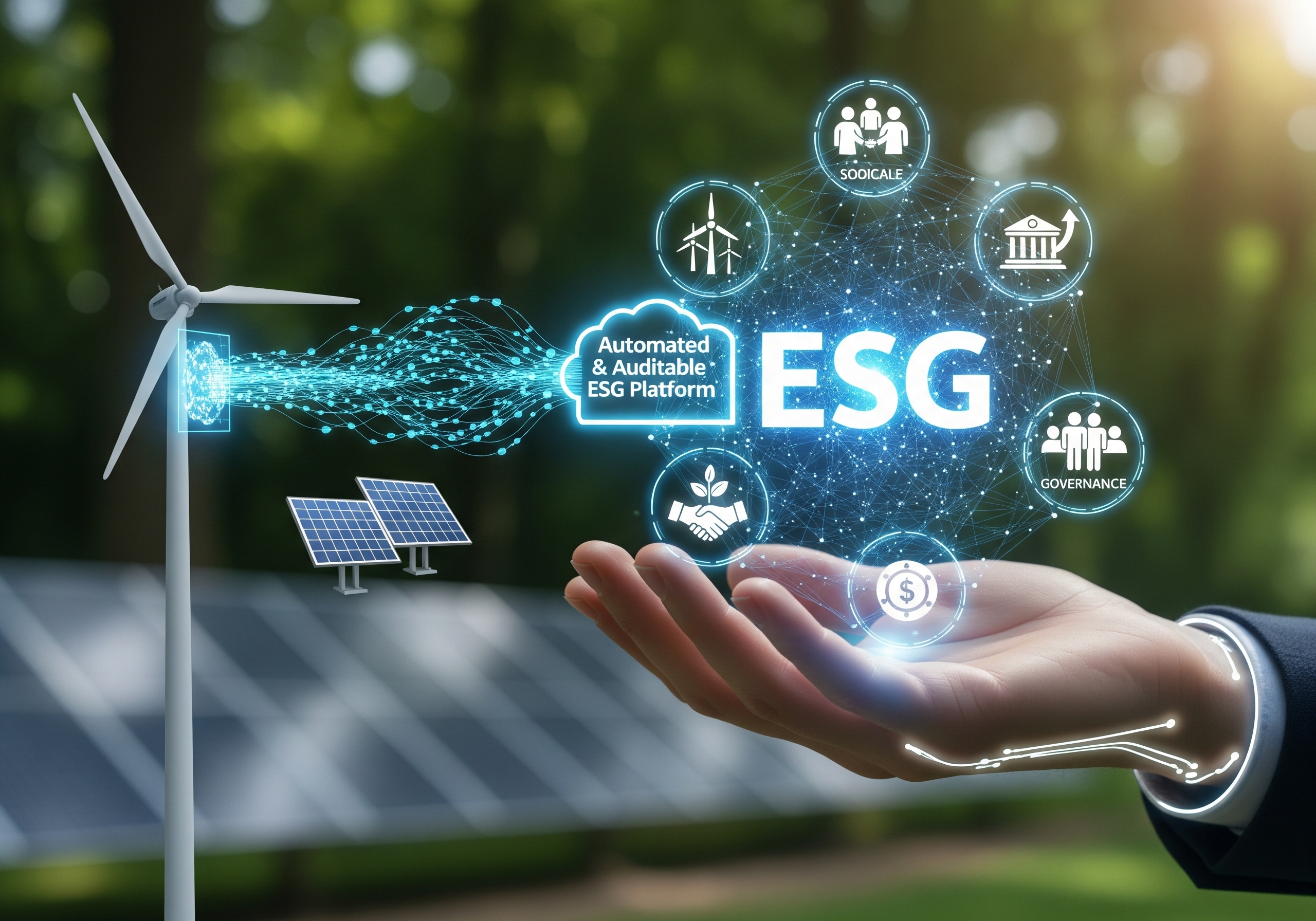ESG & Climate Tech
The Future of ESG: Using IoT and AI for Automated, Auditable Carbon Accounting

For years, ESG (Environmental, Social, and Governance) reporting has been a manual, time-consuming process. It has involved teams of people chasing down utility bills, poring over spreadsheets, and making estimations to calculate a company's carbon footprint. This approach is not only inefficient but also prone to errors and difficult to audit.
The future of ESG, however, looks very different. Thanks to the convergence of the Industrial Internet of Things (IIoT) and Artificial Intelligence (AI), we are moving away from manual estimations and towards a new era of **automated, real-time, and auditable carbon accounting.**
The Problem with Manual ESG Reporting
The traditional approach to ESG is fundamentally broken for the modern industrial world:
- It's Rear-View Mirror Reporting: Manual data collection is slow. By the time you've compiled your annual report, the data is months out of date, making it useless for real-time decision-making.
- It's Prone to Human Error: Manual data entry from spreadsheets and bills is a recipe for inaccuracies, which can undermine the credibility of your entire report.
- It's Not Auditable: It is extremely difficult for auditors to verify data that is based on estimations and compiled in disparate spreadsheets.
The Solution: A Tech-Powered Approach
The integration of IoT and AI transforms ESG from a burdensome reporting task into a strategic business function.
1. Automated Data Collection with IoT
Instead of relying on monthly utility bills, we can now use IoT sensors to collect real-time data directly from the source. We can measure the exact electricity consumption of a specific machine, the precise amount of fuel used by a generator, or even the fugitive emissions from an industrial process. This data is collected automatically, 24/7, with no manual intervention.
2. Real-Time Insights with an AI Platform
This stream of real-time data is fed into a central platform, like the one we've built at CBNsense. Our AI engine then gets to work:
- Automated GHG Calculations: The platform automatically converts your energy consumption and other data into GHG emissions, providing you with a real-time, dynamic carbon footprint.
- Anomaly Detection: The AI can identify unusual spikes in energy use or emissions, often pointing to operational inefficiencies or maintenance issues that would have otherwise gone unnoticed.
- Predictive Forecasting: By analyzing trends, the platform can forecast your future emissions, allowing you to be proactive in your sustainability efforts.
3. Unshakeable Auditability
This is perhaps the biggest game-changer. When an auditor asks for evidence, you no longer have to dig through folders of spreadsheets. With an automated platform, every single data point is time-stamped, traceable back to its source sensor, and securely stored. This creates an **unshakeable, auditable trail** that builds immense trust with regulators, investors, and customers.
Moving Beyond Spreadsheets
The future of ESG is not about better spreadsheets; it's about better data. By embracing IoT and AI, companies can transform their ESG programs from a reactive reporting exercise into a proactive, data-driven strategy that not only improves their environmental impact but also drives real business value.
